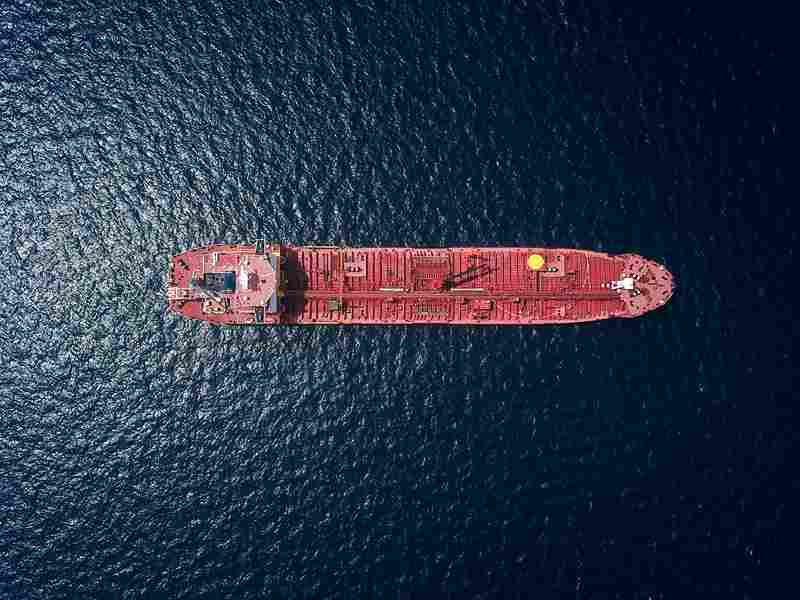
Combustion Kinetics and Mechanisms of Bunker Fuels
Introduction
Bunker fuels, primarily heavy fuel oils (HFO), are the lifeblood of maritime shipping, powering the engines that transport goods across the globe. Understanding the combustion kinetics and mechanisms of these fuels is crucial for optimizing engine performance, reducing emissions, and developing cleaner alternatives. This article delves into the complex world of bunker fuel combustion, exploring the chemical kinetics, reaction mechanisms, and the implications for engine design and environmental impact.
Composition of Bunker Fuels
Bunker fuels are derived from the residual fractions of crude oil distillation, resulting in a complex mixture of hydrocarbons, including alkanes, cycloalkanes, aromatics, and asphaltenes. The high viscosity and sulfur content distinguish them from lighter fuels. These characteristics influence the combustion process, making it less efficient and more polluting compared to other fuels like diesel or gasoline.
Combustion Kinetics: An Overview
Combustion kinetics involves the study of reaction rates and the steps through which reactants transform into products. For bunker fuels, this process is intricate due to the diverse range of hydrocarbon molecules and impurities present. The combustion of bunker fuels can be broken down into several key stages:
- Ignition
- The ignition phase involves the initial breakdown of fuel molecules in the presence of oxygen. This phase is critical for determining the overall combustion efficiency and emission profiles. The ignition delay, which is the time between the start of fuel injection and the onset of combustion, is influenced by the fuel’s chemical composition and the engine’s operating conditions.
- Flame Propagation
- Once ignition occurs, the flame propagates through the fuel-air mixture. This phase involves a series of rapid exothermic reactions, producing heat and light. The flame speed and stability are crucial for efficient combustion, influenced by factors such as turbulence, fuel-air ratio, and the chemical kinetics of the fuel.
- Burnout
- The burnout phase involves the complete oxidation of remaining fuel molecules. This phase is essential for minimizing unburned hydrocarbons and other pollutants. Efficient burnout depends on adequate mixing of fuel and air, as well as sufficient time and temperature to allow complete combustion.
Reaction Mechanisms
The combustion of bunker fuels involves a multitude of chemical reactions. These can be broadly categorized into three groups: pyrolysis, oxidation, and pollutant formation.
- Pyrolysis
- Pyrolysis is the thermal decomposition of fuel molecules in the absence of oxygen. For bunker fuels, pyrolysis produces smaller hydrocarbons, hydrogen, and carbon monoxide. This stage is crucial for breaking down large, complex molecules into reactive intermediates that can participate in subsequent oxidation reactions.
- Oxidation
- Oxidation reactions involve the combination of these intermediates with oxygen to produce carbon dioxide, water, and other products. The oxidation process can be divided into high-temperature and low-temperature oxidation. High-temperature oxidation is characterized by rapid reactions producing significant heat, while low-temperature oxidation involves slower reactions and the formation of intermediate species like aldehydes and ketones.
- Pollutant Formation
- During combustion, several unwanted by-products are formed, including nitrogen oxides (NOx), sulfur oxides (SOx), particulate matter (PM), and unburned hydrocarbons. The formation of these pollutants is influenced by the combustion temperature, fuel composition, and oxygen availability. For example, high combustion temperatures promote NOx formation, while sulfur in the fuel leads to SOx emissions.
Influencing Factors on Combustion Kinetics
Several factors influence the combustion kinetics of bunker fuels, including fuel properties, engine design, and operating conditions.
- Fuel Properties
- The chemical composition, viscosity, and sulfur content of bunker fuels significantly affect their combustion behavior. High aromatic content can lead to soot formation, while high sulfur content results in SOx emissions.
- Engine Design
- Modern marine engines are designed to optimize the combustion process, incorporating advanced injection systems, turbochargers, and exhaust gas recirculation (EGR) systems. These technologies aim to enhance fuel-air mixing, improve ignition, and reduce pollutant formation.
- Operating Conditions
- Engine load, speed, and temperature are critical parameters that influence combustion kinetics. Optimal operating conditions ensure complete combustion, maximizing efficiency and minimizing emissions.
Advanced Analytical Techniques
To study the combustion kinetics and mechanisms of bunker fuels, several advanced analytical techniques are employed:
- Gas Chromatography-Mass Spectrometry (GC-MS)
- GC-MS is used to analyze the composition of fuel and combustion products, identifying specific hydrocarbons and intermediates formed during combustion.
- Laser Diagnostics
- Laser-based techniques, such as Laser-Induced Fluorescence (LIF) and Particle Image Velocimetry (PIV), provide real-time measurements of temperature, species concentration, and flow dynamics in combustion systems.
- Computational Fluid Dynamics (CFD)
- CFD simulations are employed to model the combustion process, providing insights into the complex interactions between chemical reactions, fluid flow, and heat transfer.
Environmental and Economic Implications
Understanding the combustion kinetics and mechanisms of bunker fuels has significant environmental and economic implications. Improved combustion efficiency leads to lower fuel consumption and operating costs, while reducing emissions contributes to environmental protection and compliance with regulations.
Conclusion
The combustion kinetics and mechanisms of bunker fuels are complex and influenced by a myriad of factors. Advances in analytical techniques and engine technologies are enhancing our understanding and ability to optimize combustion processes. As the maritime industry moves towards cleaner fuels and more stringent emission standards, continued research in this field is essential for developing sustainable solutions that balance economic and environmental considerations.





